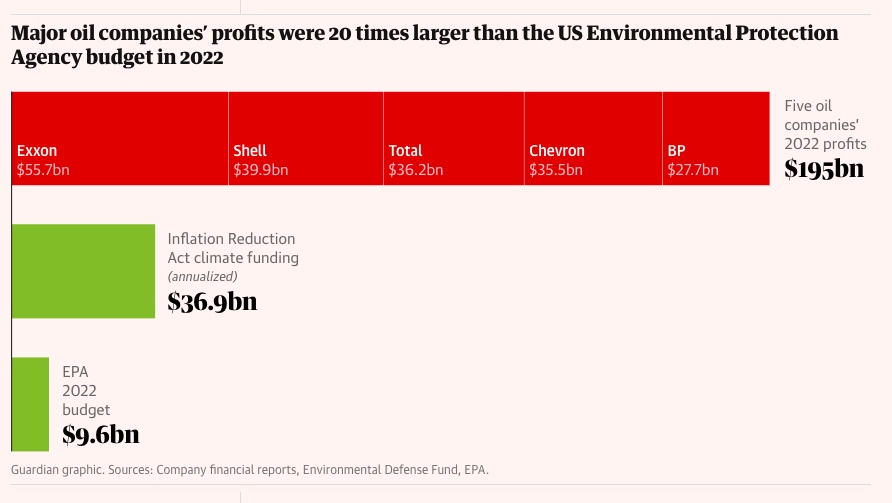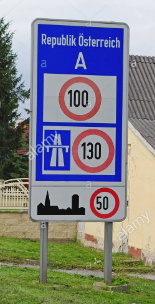Why?
...do we need to know how to convert units?
To make a comparison between two numbers, they must be in the same units!
And comparisons are useful...
- to make a decision: Which one to buy?
- to prioritize: Will I save more CO2 emissions by reducing my beef consumption, or buying fruit that's grown locally?
- to make an argument: The city of Goshen would come out ahead by paying for curbside recycling to reduce the money they spend to send all of our garbage to the landfill!
- to communicate urgency (or lack of urgency) to an audience: (see cat deaths)
- to check your answers to a math problem: Wait a second, I'm supposed to calculate the size of an atom, but when I punched the numbers into my calculator, I got 10 feet?!
The Inflation Reduction Act of 2022 "makes the single largest investment in climate and energy in American history". Along with \$300 billion in deficit reduction, it will disburse \$369 billion dollars to address energy security and climate change over the next 10 years, or \$37 billion per year in energy/climate funding.
What should we make of this comparison with major oil company profits in 2022??

21st century: Google!
Google can do many unit conversions for you:
Google will respond with useful information to queries like 1 US dollar in Icelandic Krona or 170 lbs to kilograms.
 This sign as you enter Österreich(= Austria) indicates that the default speed limit on high speed two-lane roads is 100 kilometers / hour, on freeways 130 km / hr, and in towns is 50 km / hr.
Find out how fast you can drive on a freeway using 130 km/hr to miles/hr...
This sign as you enter Österreich(= Austria) indicates that the default speed limit on high speed two-lane roads is 100 kilometers / hour, on freeways 130 km / hr, and in towns is 50 km / hr.
Find out how fast you can drive on a freeway using 130 km/hr to miles/hr...
DYI
But you need to know how to make these unit conversions yourself: Many conversions--particularly between metric units--can be done without finding the nearest Internet portal. And you can also use these techniques to solve more complicated questions (such as those on the combustion worksheet...) or that you can't quite so easily ask Google.
Directions
- In what follows, show your work for each unit conversion.
- Every number you write down should have units written down with it.
- Answers without your work will receive no credit, because we know you can just Google the answer!
But you may use Google to check your answers and (and then correct your work, as necessary). For example: How tall (in meters) is a person who is 6 ft tall?
Start with: $$ 6 \text{ feet} \cdot \frac{?}{? \text{ feet}} \cdot \text{[? more conversions]}= \text{[ ? ] meters}.$$
A common error!
When there are multiple numbers in the denominator: E.g. convert 10,000 seconds into hours: $$ 10,000 \text{ sec }\cdot \frac{1 \text{ minute}}{60 \text{ seconds}}\cdot \frac{1 \text{ hour}}{60 \text{minutes}}=\frac{10,000}{60*60}\text{ hours}.$$
It's tempting to punch this into your calculator as:
10000 / 60 * 60 means $\frac{10000}{60}*60$= 10,000??!!
Instead enter this as:
10000 / 60 / 60 $\approx$ 2.8 hours (a little less than 3 hours).
Practicing Unit conversions
Standard metric prefixes:
kilo- =1,000 mega- =1,000,000 giga- = 1,000,000,000.
milli- =1/1,000=0.001 micro- =1/1,000,000=0.000 001 centi- = 1/100=0.010
English units
- 1 mile = 1.6 kilometers; 1 inch = 2.54 cm 12 inches = 1 foot
- 100 cm = 1 m; 1000 m = 1 km 1 mm = 0.001 m = $10^{-3}$ m
- 1 kg = 2.2 lbs; 1000 grams = 1 kilogram; 16 oz = 1 lb
In what follows, show the work necessary to for each unit conversion. Every number you write down should have units written down with it. Don't just give the answer, because we know you can find the answer using Google! But you may want to use Google to check your answers...
- The distance from Goshen to Elkhart is 11.3 miles. Convert to kilometers.
$$11.3 \text{ miles} *\frac{1.6 \text{ km}}{1 \text{ mile}}= \color{blue}18.1 \text{ km}$$
- The distance from Chicago to Goshen is 196 km. Convert that to miles.
$$196 \text{ km} *\frac{1 \text{ mile}}{1.6 \text{ km}}= \color{blue}122.5 \text{ miles}$$
- 150 lbs is how many kilograms?
$$150 \text{ lbs} *\frac{1 \text{ kg}}{2.2 \text{ lbs}}=\frac{150}{2.2}=\color{blue} 68.2 \text{ kg}$$
- 29 grams is how many
kilograms?
$$29 \text{ gm} *\frac{1 \text{ kg}}{1000 \text{ gm}}= \color{blue}0.029 \text{ kg}$$
- A heavyish letter weighs 1.5 ounce (oz).
How much is this in grams?
$$1.5 \text{ oz} *\frac{1 \text{ lb}}{16 \text{ oz}} *\frac{1 \text{ kg}}{2.2 \text{ lb}} *\frac{1000 \text{ g}}{1 \text{ kg}} = \color{blue}42.6 \text{ g}$$
- How tall (in inches) is a 1.70 meter tall person?
First find inches, then convert that to feet and inches...$$1.70 \text{ m} *\frac{100 \text{ cm}}{1 \text{ m}} *\frac{1 \text{ in}}{2.54 \text{ cm}}=66.9\text{ in}\approx 67\text{ in}. $$ Now 5 ft* 12 inches/foot = 60 inches and
6 ft* 12 inches/foot=72 inches.
So 67" is 5 feet (60") plus 7 inches = 5 ft 7 inches.
Some of you converted to feet, OK... $$66.9\text{ inches}\cdot\frac{1\text{ foot}}{12\text{ inches}} = 5.58 \text{ feet}.$$ And rounded to 5.6 feet $\stackrel{?}=$5'6"??
But that decimal remainder of feet should be converted like... 0.58 feet*12 inches/foot=6.96 inches. Closer to 7 inches than 6.
- You're speeding along the highway at 75 miles/hour. How fast is that in kilometers / hour?
* Write the speed as $ \frac{75 \text{ miles}}{1 \text{ hour}}$. You'll only have to convert miles to km. Just leave the hour on the bottom.
$$\frac{75 \text{ miles}}{1 \text{ hr}} \frac{1.6 \text{ km}}{1 \text{ mi}}= \frac{120 \text{ km}}{1 \text{ hr}}=\color{blue}120\text{ km/hr} $$
- How fast is 60 miles/hour in meters/second?
$$ \frac{60 \text{ mi}}{1 \text{hr}} \frac{1.6 \text{ km}}{1 \text{mile}} \frac{1000 \text{ m}}{1 \text{ km}} \frac{1 \text{ hr}}{60 \text{ min}} \frac{1 \text{ min}}{60 \text{ sec}}= \frac{96,000}{3,600}= \color{blue}\frac{26.7 \text{ meters}}{\text{ sec}} $$